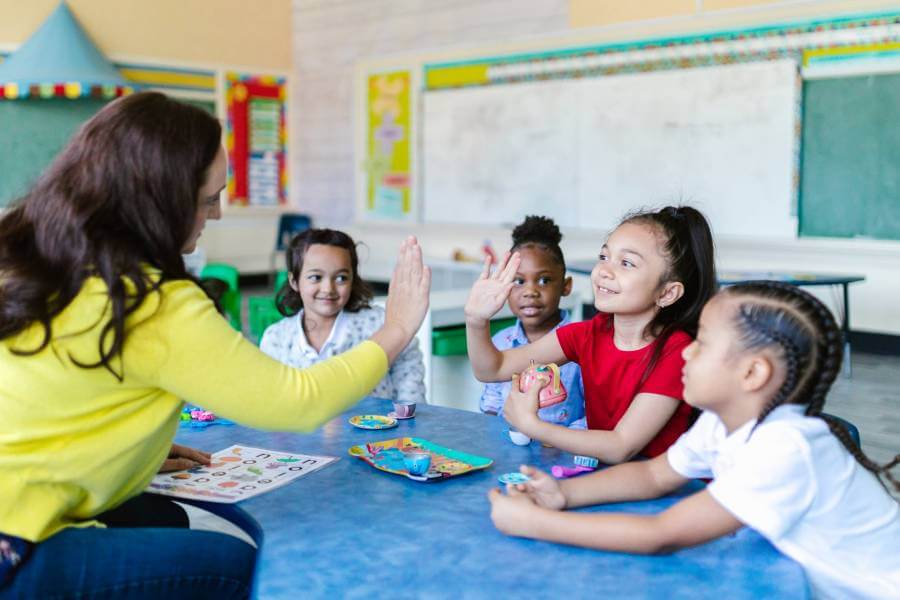7 Ways to Create a Culturally Responsive Classroom
Over the past decade, there has been a significant change among students, their upbringings, experiences, and past encounters. Unlike before, classrooms now have children from varying ethnicities, races, religions, and socioeconomic backgrounds. To address these changing scenarios, teachers must also modify their strategies. School administration must keep traditional teaching methods on the backburner to encourage learning in an all-inclusive environment. Innovative approaches, such as culturally responsive classroom , can help achieve that.
But what exactly does that mean?
Culturally Responsive Classroom
Culturally responsive classroom and teaching is a pedagogy that focuses on recognizing the diversity among students and incorporating their cultural references in everyday lessons. Traditional learning approaches concentrate on a teacher-student hierarchy where the teacher’s words are often gospel, and the student must strictly follow the instructions. Worse, even tests are standardized. Therefore, regardless of their background, all students are expected to perform the same way.
With circumstances now evolving, these approaches are slowly becoming outdated. Classrooms now have an assortment of children, and the instructions given to them must reflect their social context. If you’re a teacher in the 21st century and looking for ways to build a culturally responsive classroom, here are a few things you can do.
1. Pursue an Advanced Degree
Teachers who pursue advanced education show a greater level of commitment to their profession since they’re willing to learn more. To make a real difference in your students’ lives, consider enrolling in a Master of Arts in Teaching – Special Education program. The knowledge and skills acquired from such programs can help you alter the curriculum, modify teaching styles, and push for large-scale changes in the system—that don’t just cater to the majority but also accommodate children with developmental and physical disabilities or special needs. Since these degrees teach you to recognize each student’s individuality, they can help you personalize school lessons based on an individual’s strengths and weaknesses.
2. Review Personal Biases
There’s no space for prejudices or personal preferences in a teacher’s life. Setting aside your preconceived notions about specific individuals may seem complicated, but it is vital. Institutional inequities already exist, and as an educator, it is your responsibility to try to eliminate them as much as you can; or at the very least not contribute to them. A student’s personal experiences and demographics should only matter to you for providing focused lessons.
If, however, you find yourself discriminating among students because of these differences, take a step back and evaluate your biases. Address any predispositions you may have so that instead of perpetuating inequality in education, you alleviate it.
3. Know Your Students
Getting to know your students can be essential in developing a culturally responsive classroom . When students open up to you about their struggles, family, or past educational experiences, it builds your relationship with them. By identifying their hobbies and behaviors, you can plan personalized lessons that encourage them to study and pursue extracurricular activities with the same interest. It is essential to recognize that children are not blank slates. Their prior experiences and lifestyle shape their personality and contribute to their cognitive skills. During group discussions, persuade them to draw on these experiences and share their perspectives to promote classroom diversity.
To understand your students better, you may:
- Distribute questionnaires to gauge their interests
- Gather feedback about which learning style suits them best
- Hold group discussions that allow them to share stories with you and fellow students.
4. Modify Classroom Curriculum
Another way to make your classroom inclusive for all and create a culturally responsive classroom is to modify your curriculum and create common goals to achieve learning outcomes. Modifying the curriculum doesn’t mean completely changing the general school program. Instead, incorporate specific objectives and needs of individuals in lessons taught regularly. Implementing this approach enables more students to engage in typical class activities by fostering participation.
As a teacher, you can design and develop educational activities like cooperative learning that encourage students to work in groups and accomplish a common learning goal. Another approach is to replace standardized tests with assessment tools that are more culturally and linguistically appropriate to evaluate student performance.
5. Personalize Word Problems
Getting your students to take an interest in math can be tedious at times. Especially word problems can be scary, complex, and even seem worthless. However, by contextualizing equations, you can make word problems exciting and enjoyable for the class. For example, create word problems that use your students’ names to make the subject matter relevant. Secondly, integrate hobbies and interests, such as sports, in your questions if your students enjoy them. Ask them to measure the area of a football field or determine the speed of a racecar and see how well they respond. You can even make these word problems reflect diverse cultures by asking students to calculate the diameters of food platters from different ethnicities.
Executing this strategy will not just help in establishing a culturally responsive classroom but will also make learning more fun.
6. Encourage Problem-Based Learning
The best part about a culturally diverse class is that you experience various unique perspectives. Cultural inclusivity doesn’t mean you group all students under one umbrella. Instead, it encourages you to celebrate the differences between individuals and ensure that their experience holds equal weightage. To practice this in your classroom, present your students with real-world scenarios and ask them to provide you with a solution.
Problem-based learning will help students identify cultural links in a problem, no matter their background, and help them relate better to the scenario given. Additionally, given their diverse experiences, each student will take a different approach to solve the same problem. At the end of the exercise, students can share their ideas among class fellows to encourage information sharing with varied perspectives.
7. Invite Guest Speakers
Once you’ve identified where your student’s interests lie, you can occasionally bring in relevant guest speakers to conduct sessions. Whether history, geography, or science, any subject can be fascinating when the right person brings passion and context.
News reporters could narrate stories about things seen or experienced during their careers. Retail workers could give tips and tricks for doing quick calculations. Both could answer questions that you as a teacher may struggle with while engaging students with real-life anecdotes.
More importantly, students who share a background with a guest speaker are more likely to work hard and excel at school. Therefore, inviting diverse speakers can motivate the whole class to perform well and honor cultural variety among themselves.
Conclusion
The student population comprises different races, cultural identities, ethnicities, and socioeconomic statuses. As an educator, it is your responsibility to embrace and reflect on these differences while teaching because you have the power to impact their lives. By encouraging a culturally responsive classroom, you can positively affect your students that may last beyond their time spent in schools.

Founder Dinis Guarda
IntelligentHQ Your New Business Network.
IntelligentHQ is a Business network and an expert source for finance, capital markets and intelligence for thousands of global business professionals, startups, and companies.
We exist at the point of intersection between technology, social media, finance and innovation.
IntelligentHQ leverages innovation and scale of social digital technology, analytics, news, and distribution to create an unparalleled, full digital medium and social business networks spectrum.
IntelligentHQ is working hard, to become a trusted, and indispensable source of business news and analytics, within financial services and its associated supply chains and ecosystems































